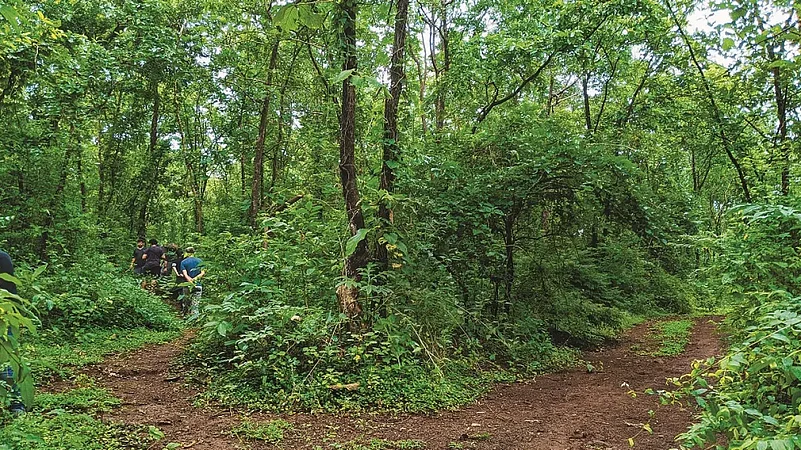Plucking some berries off the branch of a tall shrub, the local Adivasi guide offered them to a motley group of city people of varying ages – some clad in designer forest-worthy clothes and shoes – who had been following her for a while now. Although she popped some of the berries into her mouth, a few in the entourage were not convinced. "Does the woman really know what those berries are?" “Shouldn't we wash them before eating them?” "Don't give the berries to the children." The group whispered and nudged each other. Some trusting souls chomped on a few of the berries. The AdivasisThe guide at Vanvadi did not understand what the guests were whispering among themselves, but she smiled at the ones who held back. She knew that most people from the city were not aware of the diverse foods that grew naturally in the forest.
,
Tucked at the edge of a remote village, Vanvadi lies in the foothills of the Sahyadri range in the Western Ghat mountains. A three-hour drive from Mumbai, it is a sprawling 65-acre land with over 90 per cent tree cover, a small organic farm, and waterbodies. But what makes it special is the story behind it – a lesson in forest regeneration, rainwater harvesting, and offering a home to over 120 traditionally useful plant species, including 52 varieties of forest food.
The 65 acres of clear-felled land was bought 28 years ago by a non-profit collective of over 24 people by pooling in their money, said Bharat Mansata, one of the most active members of the group. “When we saw this land, it was in the rains. And though half of it had been cut in the previous year, and another half had been cut two years earlier, we could see there was vigour in the soil. It was regenerating nicely,” said Mansata. By this time, more people joined the initiative, “and we ended up buying 65 acres of land, more than what we had intended earlier, partly to build a buffer so that the land got a chance to regenerate nicely,” he said.
The team also made some basic guidelines and rules, Mansata explained. No use of chemicals; at least 50 per cent tree cover; judicious use of water; ecological audit as the guiding principle (that is, the presence of the collective should improve the land and not degrade it) progressive self-reliance in basic needs, and fair
dealings with local people. The land was tucked between two villages. “If we look at the history of this land, maybe 80 or 100 years earlier, it was surely an excellent forest. There were a few trees in some areas, like large ficus trees, which had not been cut off,” said Mansata. According to him, it was likely that forest-felling began in the British era. However, the practice declined with the passage of time – one of the reasons being that the post-Independence era owners, who lived in faraway villages, feared that if they did not cut the trees, somebody else would.

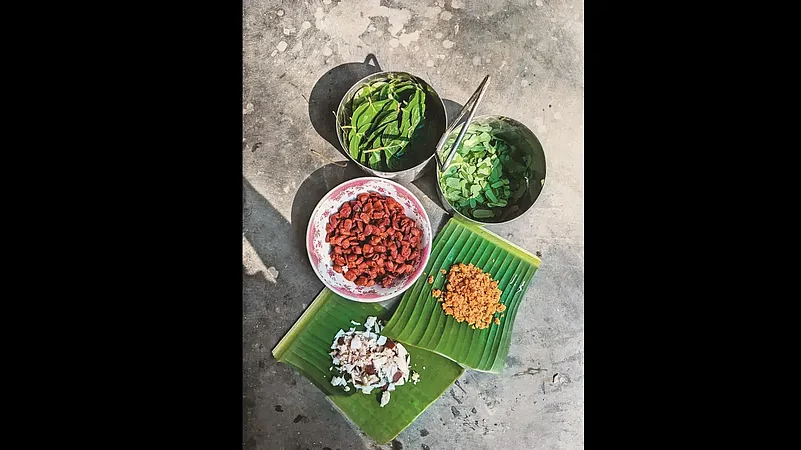
The collective decided that the land should be allowed to regenerate naturally, and offered it protection from interference. “The initial settling-in process and seeing through the regeneration was not easy,” said Mansata. But they persevered. Although the forest was regenerating, they found that it was mainly the deciduous trees which were coming back, and not the evergreen ones. It was mainly because the cycle of cutting down trees and regeneration had changed the nature of the forest. “When large chunks of forests are cut, the evergreen trees do not regenerate easily. But the deciduous trees (ones that shed their leaves) regenerate nicely from the cut trunk,” he said. So they planted some evergreen trees, built a well for water supply and carried out organic farming on a small patch, where they planted fruit trees, millets, vegetables, etc. The collective was lucky to have found a mentor in (the late) Bhaskar Save, one of the pioneers of natural farming in India.


Although the foothills of the Sahyadri in the Konkan belt of Maharashtra receive heavy rainfall, the collective discovered that the region was water-deficient. As the forests in the region were being cut down, the heavy monsoon rain was lashing the ground (which would have been otherwise buffered by the layers of vegetation, and absorbed by the soil), and washing away the fertile topsoil. The soil in turn was being deposited in the stream beds lower down, and silting up the channels.
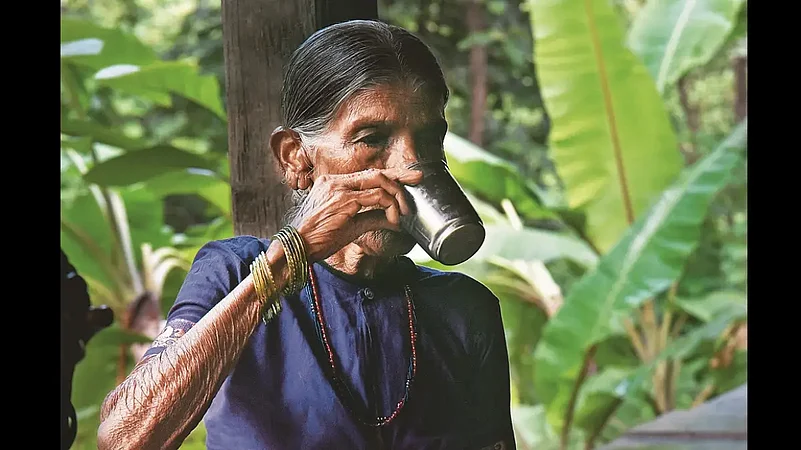
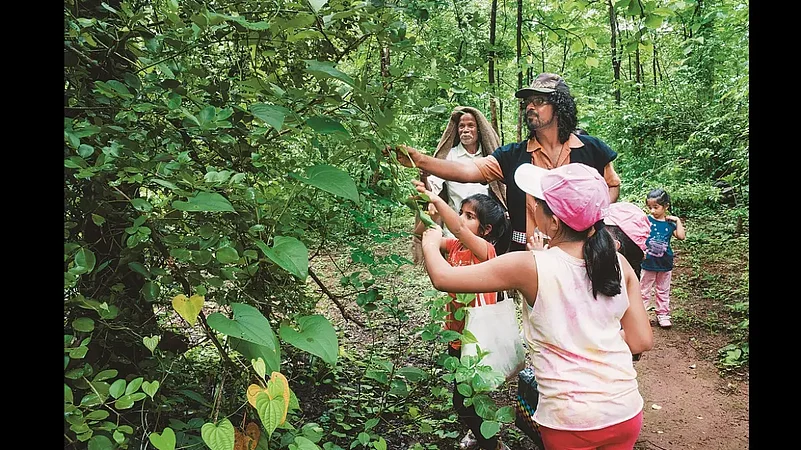
So efforts were directed towards water harvesting. A well was dug on the streamside to augment the water supply for the farm. At strategic places along the seasonal stream beds, they made small check dams, slightly deepening the part upstream so that the channels collected the rainwater. It was low-cost rainwater harvesting where the water was stored on the surface, explained Mansata. The recharging of the aquifers (owing to the forest cover) and the surface water harvesting had a positive impact on the water system. The villages downstream too began to benefit. Earlier, the hand pumps would go dry in summer; now, they found the water supply to be perennial.
In 2005, Vanvadi held its first Van Utsav where people from all over India, and some from abroad, participated. “There were 60 to 70 of us camping out in nature,” recalled Mansata. Since then, it has become an annual event.

“My first visit to Vanvadi was in 2006,” recalled Mumbai resident Neesha Noronha, “and I was totally bowled over by its wild charm. For a city-bred person like me, it was a wonderland indeed. The place had the feel of a jungle without its fearsome character.” Since then, Noronha has been actively involved in Vanvadi’s many activities, even volunteering during the workshops.
***
Vanvadi offers a range of participatory programmes and workshops. One of their popular events is the forest walks with experienced Adivasi elders to learn about traditionally useful plant species and forest foods. "Here people learn about special plants and foods, such as karvanda, mahua, the 'shevli'... " said Mansata. "The highly priced shevli are colourful, conical in shape, and have a non-veg kind of taste when cooked in a special way."
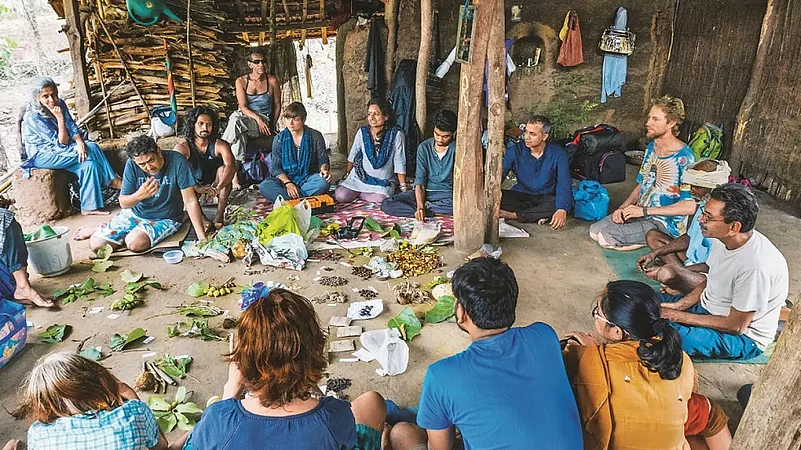
Sanjiv Valsan, who has been associated closely with Vanvadi, recalled his surprise in tasting the fruits of the 'tembrun' or tendu tree on one such walk. Tendu leaves
are used to make 'beedi'. "But the fruit was a delightful surprise – orange and fleshy, and tasting like apricot and mango ice cream," he said.

Vanvadi also offers volunteering opportunities at the forest farm. From time to time, they also hold tree-planting camps during the monsoon, and diverse ecology-related workshops, including one to create eco-friendly Ganesha idols before Maharashtra's famous Ganpati festival. During Holi, Vanvadi held a special programme where volunteers helped with fire-break clearances. Like many places, Vanvadi too has experienced forest fires in recent years. Although the spread was controlled before much damage was done, "trying to douse a forest fire can be a hopeless challenge," said Mansata. Since Vanvadi is in a deciduous forest zone, the trees mostly shed their leaves by Holi. Hence, the fires largely spread in the form of 'carpet fires' through the burning of the thick layer of dry leaves on the forest floor. The more viable strategy is to check its spread by creating bare strips (free of combustible leaves) on the ground. This can be done by raking the leaves to either side, so that there is no medium for the spread of the fire,” he said. To make it possible, they organised a small programme where volunteers participated in making fire-break clearances. The evenings were devoted to music and dance.
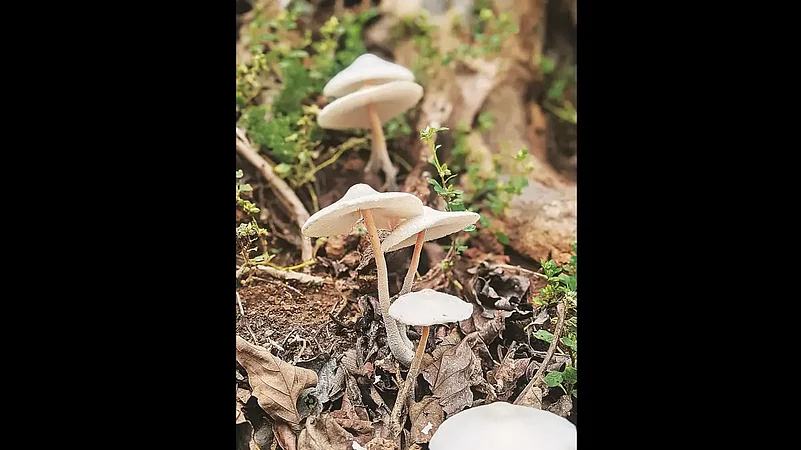
For a more broad-based dissemination of knowledge, Vanvadi is working on a plan to build an organically evolving ‘eco-versity’ and learning alliance – a community where people can collaboratively live and learn, supporting each other in symbiotic harmony – “like the forest around us,” said Mansata.

***
The Information
Learning by Doing: This long-term residential programme involves theoretical discussion, experiential learning and practical application. The focus is to help participants understand the challenges faced by the rural/Adivasi people living along the foothills of the Sahyadri, especially related to ecologically sustainable livelihoods, education and culture. Among other things, the programme includes ‘hands-on’ work involving forest and watershed regeneration, natural/organic farming, rainwater harvesting and groundwater recharging, and reclamation of eroded topsoil from silted water bodies. Participants also learn about a variety of ecologically sustainable livelihoods, including forest foods, natural processing for preservation, sustainable habitat construction, enhancing and documenting the biodiversity of flora and fauna, woodwork, palash leaf-plate making, among others.
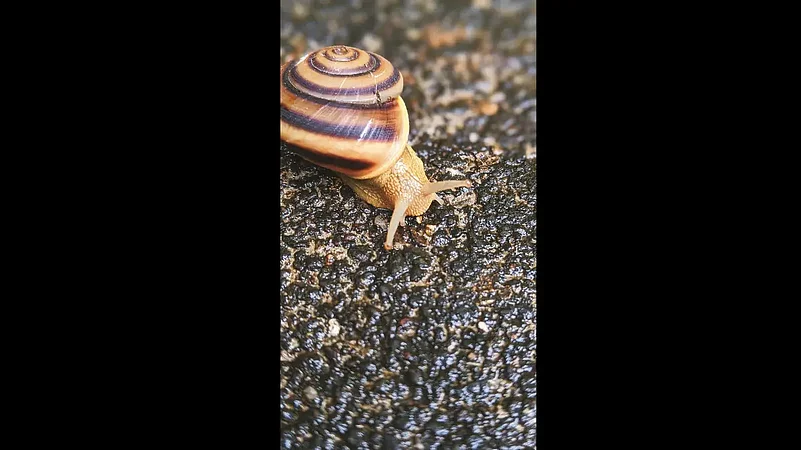
Major workshops and activities held at Vanvadi include –
- Treks and trails, camping, swimming, yoga, etc.
- Exploring faunal biodiversity - birds, amphibians, reptiles, insects, etc.
- Natural farming and organic horticulture of vegetables, fruits; seed-saving
- Ecological conservation and regeneration of natural resources such as soil, water and biodiversity
- Tribal culture and wisdom; art, music and dance
- Natural healing, meditation camps, medicinal plants
- Livelihood skills such as hand-weaving, basket-making, natural dyes, non-chemical soaps, seed jewellery
- Eco-construction with natural materials
- Forest walks with experienced Adivasi elders to learn about traditionally useful plant species
- Early monsoon ‘Forest Foods Foraging’ walks
- An annual forest festival (Van Utsav)

Visitors are welcome to spend time at Vanvadi with prior arrangements and a minimum monetary contribution. A day-visit package costs ₹700 per head and includes breakfast, lunch and evening tea as well as access to the forest. An overnight package costs ₹1000 per head and includes a stay in the community house, three meals and tea, and of course, access to the forest. Vanvadi is free of cost for children below six years.
For more details, see www.vanvadi.org .
Photographs: Rayyan Monkey and Sanjiv Valsan






